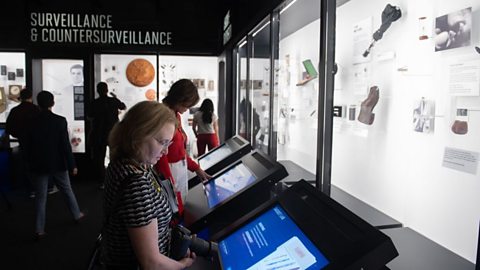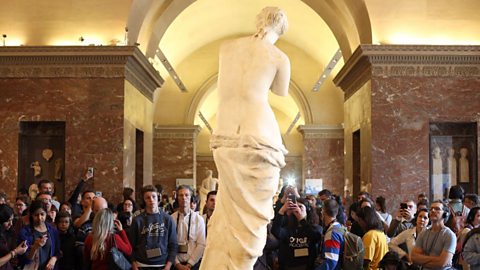A day at the museum can involve seeing ancient dinosaur bones, a crown thatâs centuries old, or sculptures from thousands of years ago.
But some museums focus on very different subjects â such as pigs, or even poo â and could give you another perspective on them. Take a look at these.
I spy a gadget or two
Itâs not the only museum in the world dedicated to spying, but this one in Washington DC, USA, has a fascinating collection of artefacts related to espionage.

It includes a letter sent by US President George Washington to a man called Nathaniel Sackett in 1777. He offered him $50 a month - the equivalent of $1,000 (approximately ÂŁ730) today - to spy for the Formed in 1775 by America's future first president, George Washington. The army's aim was to gain independence for the North American colonies from Great Britain..
If you prefer gadgets, there are examples of the cameras that were strapped to pigeons to collect intelligence from across enemy lines in World War One. There is also the lipstick used as a pistol in the 1960s, a device that âsniffed outâ bugging equipment and a World War Two escape map that was revealed after the user soaked the ace of spades from a pack of playing cards in water.
The diseases humans deal with
Sydney, Australia, has been the home of the Museum of Human Disease since 1959.
The museumâs aim is to let visitors make decisions about their lifestyle by showing them the impact different diseases and lifestyles can have on human tissue. There are more than 2,500 specimens in the museum collection, showing how diseases rare to Australia, such as typhoid and diphtheria can affect the body. It also demonstrates what smoking, obesity and drug-taking can do to people.
Although it sounds like heavy stuff, the museum welcomes thousands of high school students on educational tours each year. During the first lockdown in the 2020 Covid-19 pandemic, items in the collection were made available to view online. Museum director Derek Williamson said at the time: âItâs so important to understand how diseases work â especially during a pandemic.
âBy learning more about past outbreaks and how they affect the body, we can also learn why some diseases are coming back.â
An essential - yet smelly - part of life
This may sound a bit⊠icky, but the intention behind the Museum of Poo is to cut through our reluctance to talk about it. Rather than focus on toilet humour, it aims to teach people more about the bodily process experienced by creatures all over the the planet.
Visitors to the museum on the Isle of Wight can find out about the square poo left behind by wombats, as well as how the workings of our gut can tell us more about our health, and the body in general.
Their website states: ââŠreally and truly, we need to talk much more about poo.â
Could Bigfoot be out there?
The legends of creatures such as Bigfoot and the mermaids of the ocean have intrigued people for centuries, while disregarded by many as just that - legends.

One place which takes a serious look at these creatures is the International The study of creatures which some people believe exist in the present day but for which there is no definite proof. One example is the Yeti, or Abominable Snowman. Museum in Portland, Maine, in the US. It is the result of five decades of research which includes taking casts of footprints and collecting hair samples said to be from creatures such as Bigfoot and the Abominable Snowman.
The museum also looks at âliving fossilsâ. These are creatures long thought extinct but discovered to be still alive. An example of this is the coelacanth, a large fish believed to have died out with the dinosaurs. They were discovered alive and well off the coast of South Africa in 1938 and two species are known to exist today, with an ancestry dating back hundreds of millions of years.
This little piggy went to the museum
South Koreaâs Pig Museum has proved a popular draw for visitors, whether people want to learn more about the animals, or even give them a cuddle.
The last animal in the Chinese Zodiacâs 12-year cycle, the pig can be considered a symbol of luck and good fortune.
In this museum in the city of Icheon, visitors can watch the pigs in residence solve intelligence puzzles. Afterwards, there is a âmeet and greetâ in an area where people are free to interact with the animals, and can pick them up for a quick snuggle if they want to.
If you donât want to get that close to real-life pigs, visitors can enjoy the art gallery. It has more than 7,000 examples of pig images in various media, featuring works from over 20 countries.
The intriguing lives of famous statues
How the Statue of Liberty came to be - and other sculptural tales

The most extreme libraries on Earth
If you weren't excited to read before, you will be if you go to any of these libraries.

Quiz: Can you guess the book from its (badly described) plot?
Can you work out which books we're talking about from these terribly vague descriptions?
